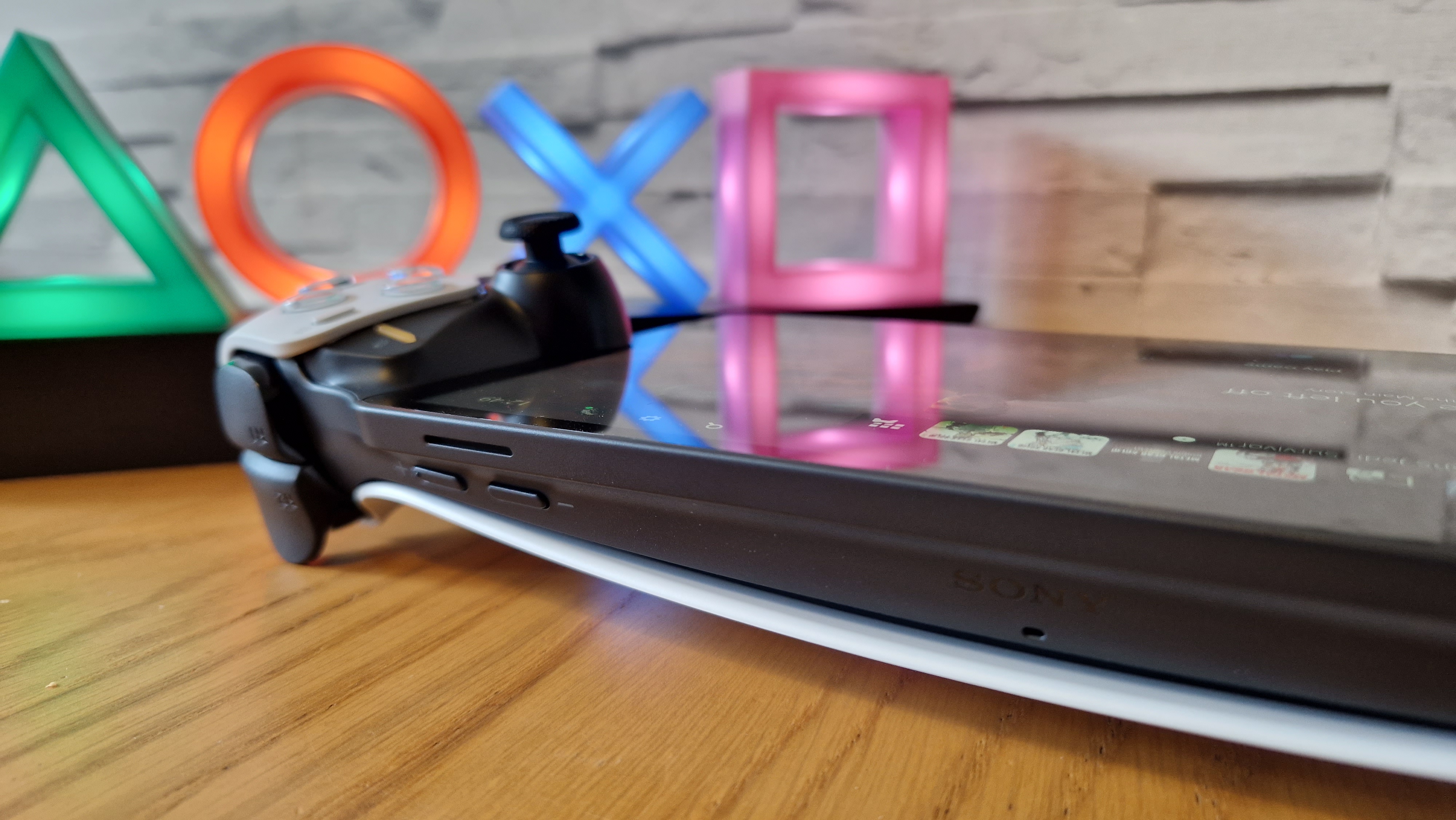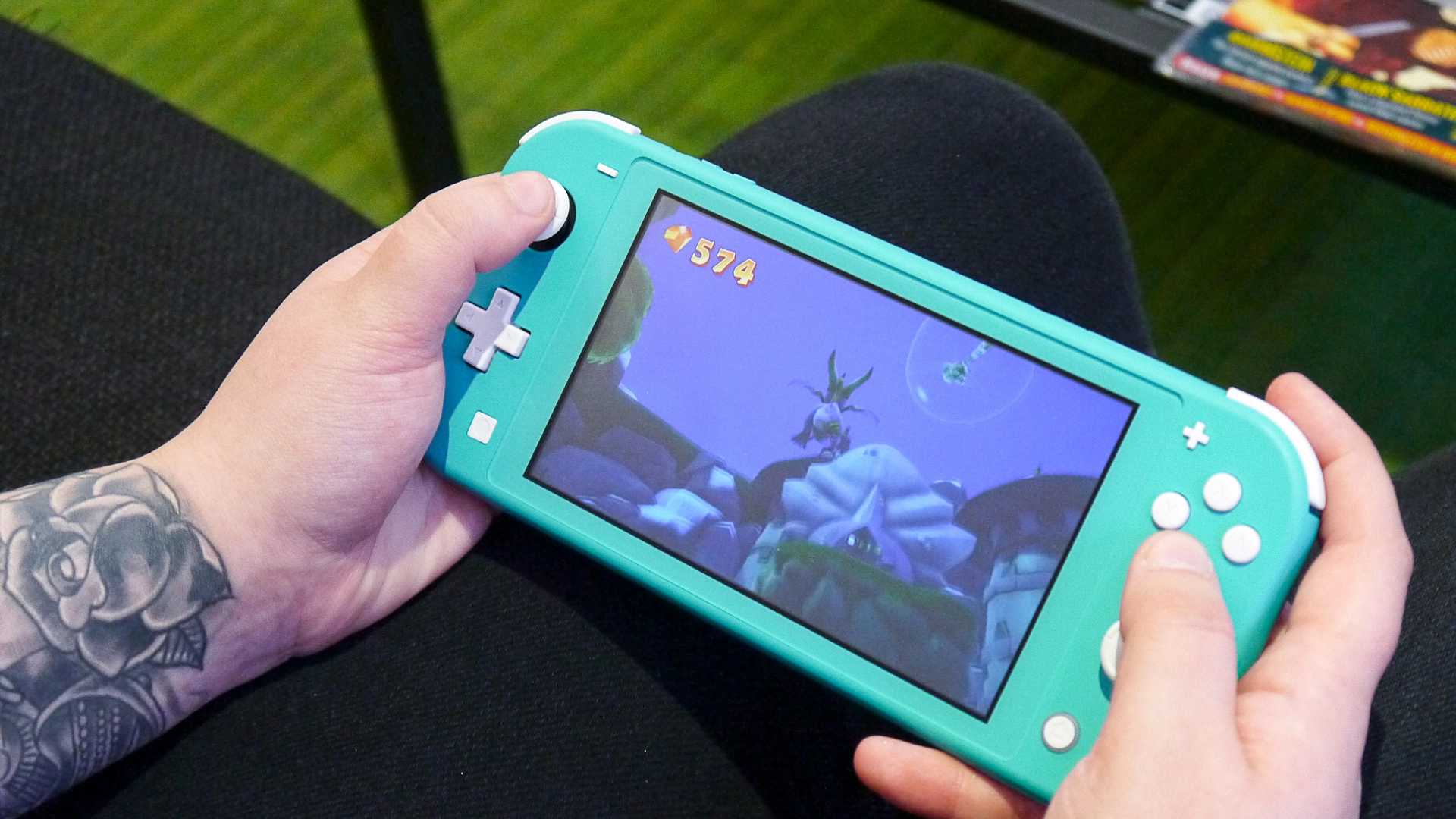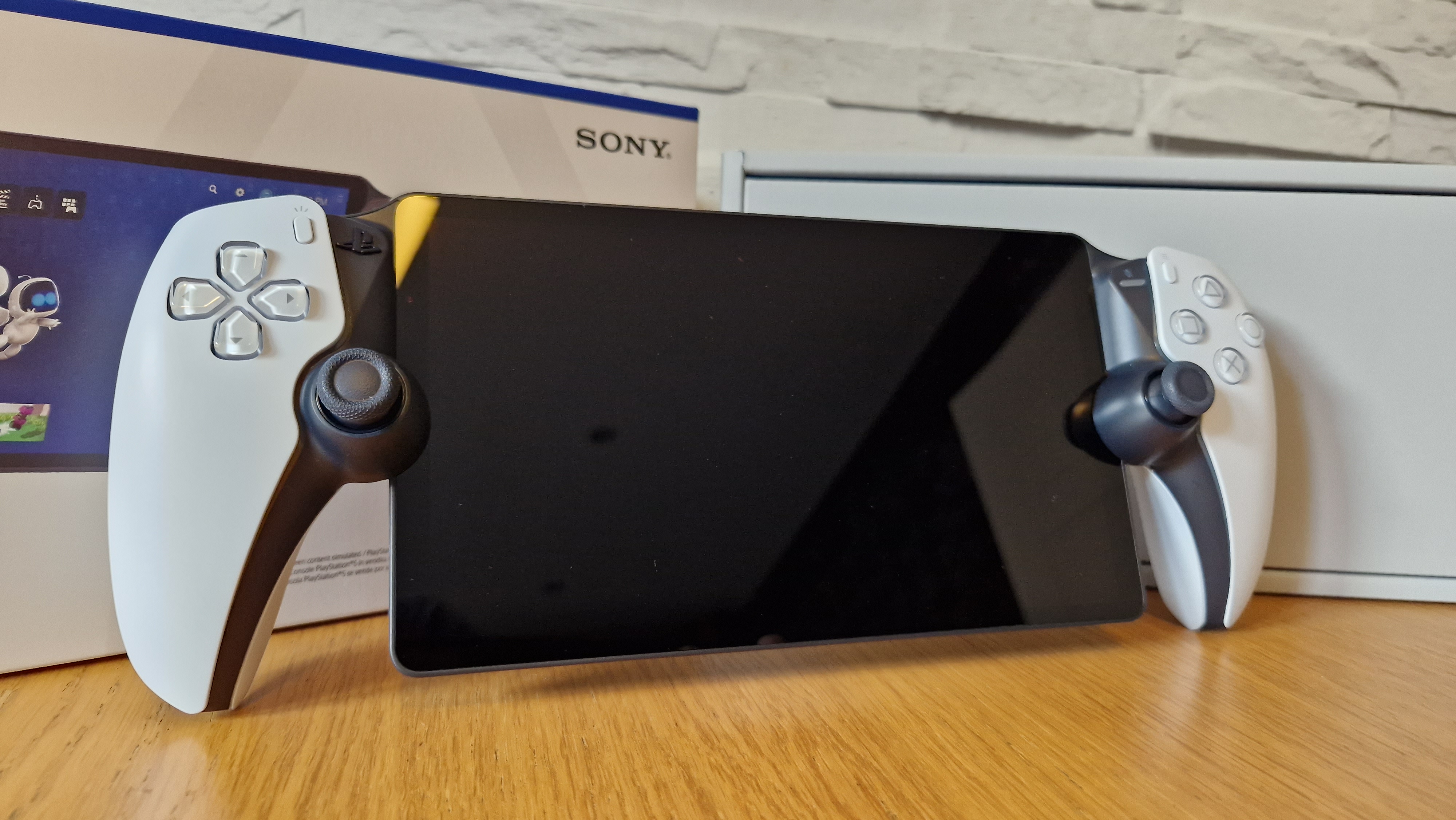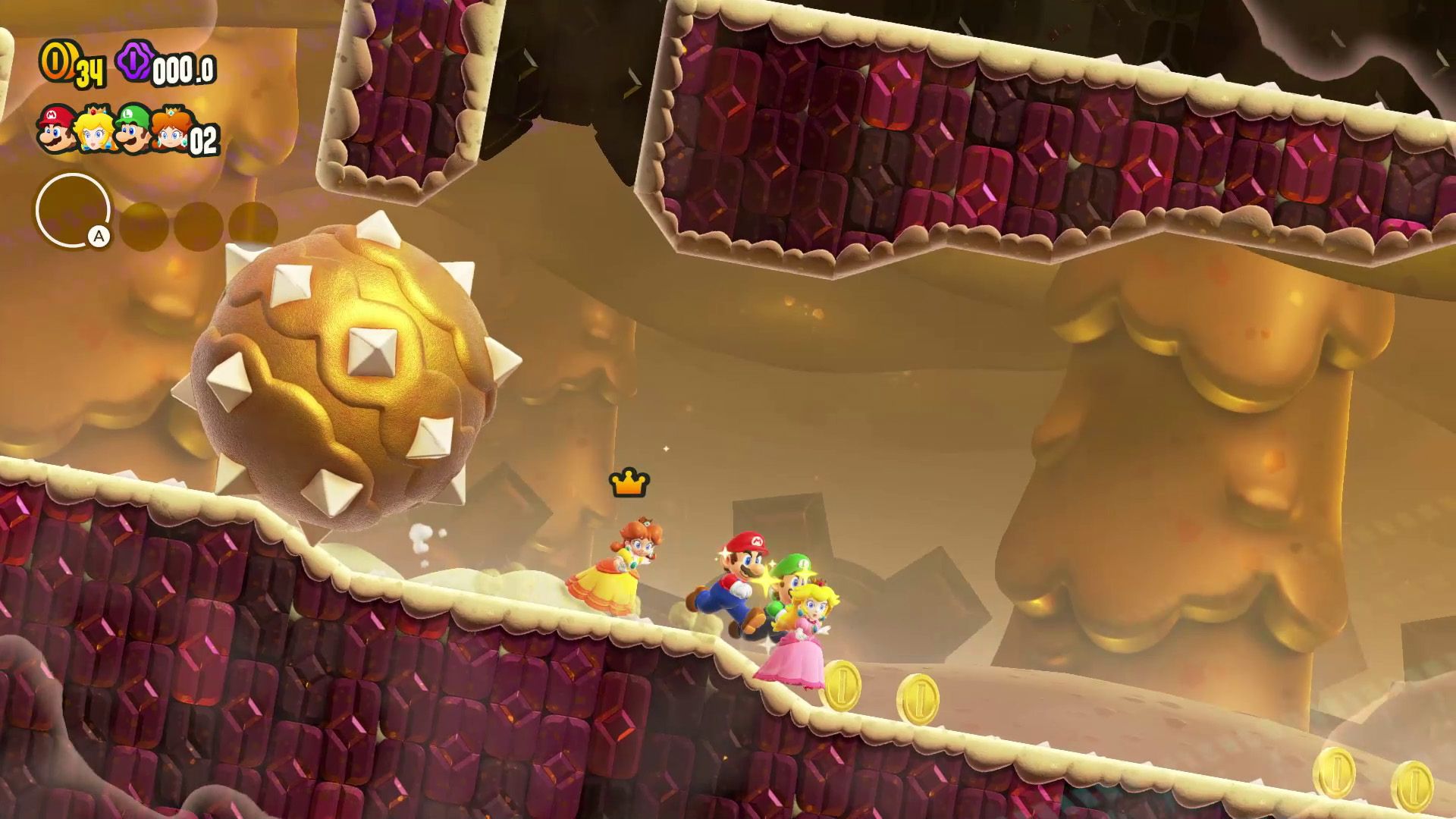PlayStation Portal vs Nintendo Switch Lite - the two handhelds compared
Here’s our detailed breakdown of how the PlayStation Portal and the Nintendo Switch Lite stack up

If you’re shopping for a new gaming handheld, then there’s a high chance that you’re trying to choose between the PlayStation Portal remote player and the Nintendo Switch Lite. Although the two products may initially seem quite different, they both share a surprising amount in common which could leave you wondering which to choose.
After all, the two devices are designed to enable you to play some of the best video games in a more convenient, portable format. The first major distinction, however, is that PlayStation Portal is a PlayStation 5 accessory rather than a wholly standalone gaming console. Released in November 2023, the device uses your internet connection to connect to your home PS5 console and stream your existing library of games.
This makes it a brilliant choice if you are already a PS5 owner, as it gives you another great way to play your existing PS5 game library. The Nintendo Switch Lite, on the other hand, is an entirely standalone gaming console released in September 2019 that can play games without the need for a separate system.
They’re both excellent products with plenty of unique characteristics, so we have created this detailed comparison to help you choose between the two. With a breakdown of the PlayStation Portal and Nintendo Switch Lite’s price, design, features, and much more, our goal is to assist in picking the best product for your individual circumstances with plenty of expert advice.
PlayStation Portal vs Nintendo Switch Lite - Price

The PlayStation Portal costs $199.99 / £199.99 / AU$329.95. It is available from PlayStation Direct and the usual retailers. Unfortunately, stock is quite hard to come by at the moment, so you should consult our PlayStation Portal restock tracker for the latest stock updates and advice on where to try your luck at getting the highly sought-after accessory.
The Nintendo Switch Lite is widely available via Nintendo or at third-party retailers like Amazon and also has a list price of $199.99 / £199.99 / AU$329.95. Unlike the PlayStation Portal, however, the Nintendo Switch Lite often receives special bundle offers that allow you to pick up one of the best Nintendo Switch games or a special edition system at no extra cost.
While the PlayStation Portal only comes in a single colorway, there are a wealth of options to choose from when buying a Nintendo Switch Lite. This includes bright pastel blue, yellow, gray, turquoise, and the super cute pink coral colorway. All colors of the console are widely available and cost roughly the same amount, meaning that you are free to choose your favorite. There are also some special editions of the Nintendo Switch Lite available, including an adorable Animal Crossing: New Horizons edition, but these can be a little harder to come by.
Sign up for breaking news, reviews, opinion, top tech deals, and more.
Although both products are the same price, the wealth of colors and the wider availability of the Nintendo Switch Lite might make it the clear winner in this regard. The one thing to bear in mind, however, is that you will also need to shell out some additional cash for Nintendo Switch games. These can cost anywhere from a couple of dollars to $59.99 / £49.99 / AU$79.95 for full-price releases - even more if you're in the market for a special edition. If you’re shopping for a PlayStation Portal, then you most likely already own a PS5 and at least a handful of games to use with it which could make it the more cost-efficient option.
PlayStation Portal vs Nintendo Switch Lite - Design

Whether you prefer the design of the PlayStation Portal or Nintendo Switch Lite is going to largely come down to your personal preferences. The PlayStation Portal is the larger of the two handhelds, coming in at a hefty 5.9 inches (15cm) from top to bottom and 12 inches (30.5cm) wide. This means that you’re likely going to have to carry it around in a large bag or dedicated case at least. The smaller 3.6 inch (9.1cm) height and 8.1 inch (20.8cm) width of the Nintendo Switch Lite allows it to be more conveniently stowed in a pocket. The Nintendo Switch Lite is also substantially lighter, weighing just 9.7oz (275g) compared to the PlayStation Portal’s weight of 18.66oz (529g).
However, what the PlayStation Portal loses in portability, it makes up for in ergonomics. It features what is effectively two halves of a fully-fledged DualSense Wireless Controller that feels very comfortable in the hands. The Nintendo Switch Lite, in contrast, uses a very compact rounded rectangle shape that is smaller than even the base Nintendo Switch and could well be too slight for some. The size of the PlayStation Portal also means that it sports a significantly larger 8-inch 1080p LCD screen, compared to the tiny 5.5-inch 720p display of the Nintendo Switch Lite.
Although the smaller size of the Nintendo Switch Lite’s screen does help prevent the lower resolution from looking too compromised, the PlayStation Portal has a much better display that helps games shine on the device.
Both the Nintendo Switch Lite and PlayStation Portal are charged with a USB-C port and also feature a 3.5mm headphone jack, which allows you to plug in a compatible wired gaming headset. The Nintendo Switch Lite also has Bluetooth support allowing you to use a wireless gaming headset with the console. Unfortunately, the PlayStation Portal does not currently offer wireless support for anything other than Sony’s own Pulse Explore earbuds or Pulse Elite headset via the company’s PlayStation Link wireless technology.
PlayStation Portal vs Nintendo Switch Lite - Buttons and thumbsticks

Whether you prefer the buttons and thumbsticks of the PlayStation Portal or Nintendo Switch Lite will depend on personal preference. The PlayStation Portal uses the same full-size buttons and similar size thumbsticks as the regular DualSense controller, making it a good all-round option for most games. This design also has the benefit of being immediately familiar to any current PS5 players, removing any barrier put up by different control layouts.
The Nintendo Switch Lite, in contrast, uses buttons and thumbsticks that are even smaller than the already compact buttons and thumbsticks found on the Joy-Con controllers of the full-size Nintendo Switch. This may be preferable to some, but could also present issues in certain genres of games. The more limited thumbstick motion can make fast-paced action of first-person shooter (FPS) games particularly difficult to control.
The PlayStation Portal and Nintendo Switch Lite also use different overall layouts when it comes to the placement of the buttons and thumbsticks themselves. The PlayStation Portal uses the same symmetrical design as the DualSense, while the Nintendo Switch Lite uses an asymmetrical layout. This might put one ahead of the other depending on any potential accessibility needs or overall controller preferences.
PlayStation Portal vs Nintendo Switch Lite - Games and features

The PlayStation Portal boasts adaptive triggers and haptic feedback much like you would find in a DualSense controller and can offer greater immersion in games as a result. Aside from the touch-screen functionality, there are few other major features to speak of. It's also worth noting that this streaming device features a very limited operating system and is only capable of connecting to a PS5 console.
The Nintendo Switch Lite, on the other hand, has a wealth of in-built features. Although it cannot be docked and played on a TV like a traditional Nintendo Switch, it has all the features of that console in its handheld form. This includes an operating system that allows you to play games natively, and the ability to buy and download games from an online store. It also has a cartridge slot for physical titles as well as all of the features of a regular Joy-Con controller, like HD rumble and an NFC touchpoint on the right thumbstick.
There’s a touchscreen too, not to mention the ability to connect additional controllers (like the brilliant Nintendo Switch Pro Controller) to the system for local multiplayer play. Both handhelds use built-in speakers that, while nothing ground-breaking, are perfectly sufficient for the vast majority of games.
As a streaming device, the PlayStation Portal is unable to play games locally so you’re reliant on having access to a strong internet connection - Sony recommends a minimum speed of 15mbps. The Nintendo Switch Lite can be used offline, however, and features 32GB of internal storage to store digitally purchased games. You can also cheaply expand the storage of the Nintendo Switch Lite by up to 2TB by simply inserting one of the best SD cards for Switch into its rear MicroSD card expansion slot.
When it comes to the game libraries of each device, the Nintendo Switch Lite is compatible with the entire Nintendo Switch library. It boasts countless desirable first-party exclusives, including the superb Super Mario Bros. Wonder and timeless hits like Mario Kart 8: Deluxe. Third-party support is a little more patchy though, with a clear focus on indie games and smaller titles rather than the latest AAA releases. Certain genres like platformers or otome (dating visual novel) games are especially well-represented, making the Nintendo Switch Lite the number one choice if those kinds of titles appeal to you.
The PlayStation Portal is the better pick if you’re after another way to play your own library of games as well as the latest AAA releases. It is fully compatible with the entire PS5 library via streaming, so you can dive into the likes of Call of Duty: Modern Warfare 3 or Lies of P right out of the box. There are also plenty of brilliant PS5 exclusives to explore too, including Marvel’s Spider-Man 2 and Ratchet and Clank: Rift Apart. Just to reiterate, you will need to already have a PS5 console and a copy of each game to play them on the PlayStation Portal - so it's not a standalone product.
PlayStation Portal vs Nintendo Switch Lite - Which should you buy?
There are plenty of strong reasons to consider one device or the other, but this mostly comes down to your specific needs or preferences. Here's a summary of the reasons why you might consider each option:
Buy the PlayStation Portal if…
You already own a PlayStation 5
Existing PS5 owners can make full use of their library on the PlayStation Portal provided that they have a stable internet connection.
You want to play first-party titles
There are plenty of worthwhile PS5-exclusive titles that you can play on the PlayStation Portal. The likes of The Last of Us Part 1 and God of War Ragnarok are not going to come to Nintendo Switch any time soon, making this the best choice if you want a new way to play those games.
You prefer the DualSense layout
The PlayStation Portal uses a symmetrical layout like the DualSense controller. It also sports similar thumbsticks and identical buttons and triggers making it the best if this is your preferred way to play.
Buy the Nintendo Switch Lite if…
You want to play offline
The Nintendo Switch is the clear winner if you want to play games offline. As a streaming device, the PlayStation Portal needs a stable connection to a PS5 at all times to play, while the Nintendo Switch Lite is a full hand-held gaming console that works in a standalone capacity.
You want the exclusive games
The likes of Super Mario Odyssey or The Legend of Zelda: Breath of the Wild are critically acclaimed and beloved titles that are only available on Nintendo Switch
You prefer a smaller handheld
The Nintendo Switch Lite is much smaller and lighter than the PlayStation Portal, making it the better choice if you want something more compact that can be easily stowed away.
For more PlayStation accessory recommendations, see our list of the best PS5 controllers. For more on the Nintendo Switch, see our guide to the best Nintendo Switch accessories.

Dash is an experienced tech journalist who currently serves as the Gaming Editor at TechRadar, where he helps oversee coverage of video games and related products.
Before joining the team, he was Contributing Writer at PLAY (formerly Official PlayStation Magazine) and has also written articles for many of the UK's biggest gaming magazines including Edge, PC Gamer, and SFX.
Now, when he's not getting his greasy little mitts on the newest hardware or gaming gadget, he can be found listening to J-pop or feverishly devouring the latest Nintendo Switch otome.